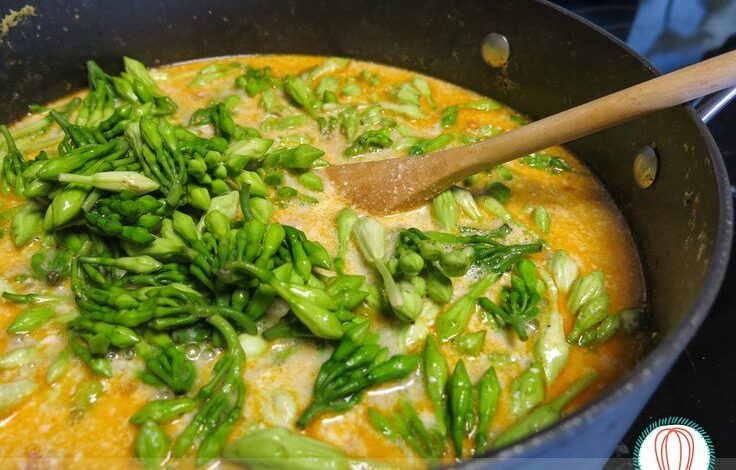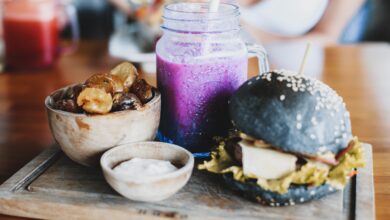The Loroco Experience: How this Climbing Vine Transforms Traditional Dishes

Have you ever tasted a flower that could transport your taste buds to new heights? If not, get ready for an unforgettable culinary adventure with the Loroco experience! This captivating climbing vine holds the key to transforming traditional dishes into extraordinary culinary delights.
From mouthwatering pupusas in El Salvador to delectable tamales in Guatemala, we delve into the magical world of this vibrant and versatile ingredient. Join us as we unravel the secrets behind this hidden gem and unlock a whole new level of flavor sensation that will leave you craving more. Get ready to embark on a gastronomic journey like no other – let’s explore the Loroco experience together!
What is Loroco?
The Loroco vine (Dioscorea alata), also known as climbing bamboo, is a tropical vine that can be found growing in diverse parts of the world. This climbing vine’s primary use is as a garden plant and naturalizer, but it has found new appreciation as a source of culinary inspiration.
Loroco has been used to make traditional dishes in various parts of the world for centuries. In Thailand, for example, it is used to make larb เหลือเกร็ด larb kreb (). Larb is a type of meatball made from ground lamb and spices and simmered in broth or coconut milk. The larb kreb made with Loroco contains more fiber than those made with other ingredients and is said to be even more flavorful.
In Cambodia, Loroco is used to make langoustines เล็ต lêt () which are deep-fried seafood balls coated in bread crumbs and then simmered in a sauce made from fish sauce, garlic, sugar, lime juice, and chili pepper. Langoustines made with Loroco are thought to be especially delicate and sweet tasting.
Loroco can also be used to add texture and flavor to conventional dishes. For example, in Brazil, it is often added to tamales ใบไม้ bái Mai
History of Loroco
Loroco is a climbing vine that has been used in traditional dishes across central and south-central Africa for centuries. The vine grows wild in parts of Africa, and it can be found in both dry and wet areas. Loroco can be used to make a variety of dishes, including stews, soups, and salads.
The Loroco Experience: How this Climbing Vine Transforms Traditional Dishes
If you’ve ever enjoyed a dish made with Loroco (also called “louco”), you’ll know that its flavor is unique and complex. This climbing vine has been used in traditional dishes across central and south-central Africa for centuries. Loroco can be found in both dry and wet areas, so it’s perfect for climates where both are common.
Given its versatility, you might be wondering how this climbing vine transforms traditional dishes. Here’s what you need to know about Loroco:
1. Its leaves are broad and flat, making it perfect for stewing or using as an envelope for other ingredients.
2. The stem is tough but pliable, making it perfect for suspending ingredients in water or broth.
3. The flowers are small but sweet, giving the vines a delicate flavor that pairs well with spices like cumin or chili powder.
Uses for Loroco
It is a climbing vine that can be found growing wild in the tropical regions of Central and South America. The plant has been used for centuries in traditional dishes across the region, most notably in Ecuador and Colombia. Loroco is commonly used to make tamales, quesadillas, empanadas, sopes, and other savory dishes.
The vines are tough and versatile, easily accommodating for both sweet and savory flavors. They can be used to add a unique texture and flavor to traditional dishes. In Ecuador and Colombia, loroco is also commonly used as a wrap or tortilla filling.
Aside from its culinary uses, it can also be used for medicinal purposes. The plant contains natural compounds that have been traditionally used as treatments for various diseases and ailments.
How to Cook with a Loroco Vine
If you’re looking for an exotic new ingredient to add to your culinary repertoire, look no further than the loroco vine. This climbing vine is native to Africa and parts of South America, and its leaves and flowers have a unique flavor and texture that make them perfect for adding complexity and flavor to traditional dishes. Here’s how to cook with this intriguing plant:
1. Start by soaking the loroco vine in water overnight. This will help soften the fibers and make it easier to work with.
2. Next, trim the vine into pieces that are about 2 inches long. You can either chop the leaves or tear them into smaller pieces.
3. Heat up some oil in a pan over medium heat. Once hot, add the chopped leaves or flowers and cook until they start to turn green and wilted down, about 5 minutes.
4. Add in the soaked loroco vine and continue cooking until all of the ingredients are cooked through, about 10 minutes more. Serve hot!
Recipes using Loroco Flowers
Loroco flowers are a climbing vine that thrives in tropical climates. The flowers are used in many traditional dishes throughout Africa and the Caribbean. Here are a few recipes using Loroco flowers:
Lorioca Flower Tea
Brew 1 cup of tea using 3 tablespoons of dried Loroco flowers, 1 teaspoon of honey, and 8 ounces of cold water. Drink as is or sweeten to taste.
Lorioca Flower Soup
Ingredients: 2 tablespoons olive oil, 2 onions, 2 cloves garlic, 1 tomato, 1 teaspoon curry powder, ½ teaspoon turmeric, ½ teaspoon ground ginger, Salt and pepper to taste, 4 cups vegetable broth or chicken broth, 2 cups cooked white rice, 5-6 ounces diced fresh loroco (or frozen) leaves.
Heat the oil in a large pot over medium heat. Add the onions and garlic and cook until softened about 5 minutes. Add the tomato and cook for another 5 minutes. Stir in the curry powder, turmeric, ginger, salt and pepper and bring to a simmer.
Add the broth or chicken broth and bring to a boil before adding the rice. Cook until all the liquid is absorbed and the rice is tender but firm to the bite—about 20 minutes. Stir in the loroco leaves just before serving.
Benefits of Eating Loroco
It is not just a pretty climbing vine; it has many benefits for both humans and the environment.
For humans, loroco is high in fiber, providing satiety and reducing hunger pangs. Additionally, it is a good source of antioxidants and other nutrients, such as iron, calcium, magnesium, and vitamin C. In addition to its nutritional value, loroco also has anti-inflammatory properties, which can help reduce the symptoms of conditions like arthritis.
It is also beneficial for the environment. As an invasive species that grows quickly and abundantly in humid climates, loroco is a boon to local biodiversity. It provides cover for wildlife and helps reduce erosion by stabilizing soil particles. Furthermore, the flowering vines are a source of food for bees and other pollinators.
Conclusion
The Loroco experience is a unique way to enjoy traditional dishes. Climbing vines provide an intimate setting, where diners can get up close and personal with their food. The vine-covered walls create a rustic atmosphere that is perfect for celebrating special occasions or just relaxing after a long day. If you’re looking for an exciting dining experience that will transform your regular fare, the Loroco Experience is definitely worth exploring.
You Might Also Like:




